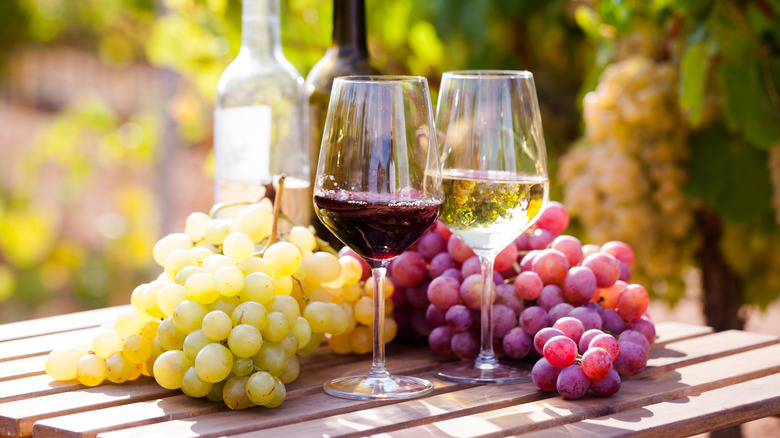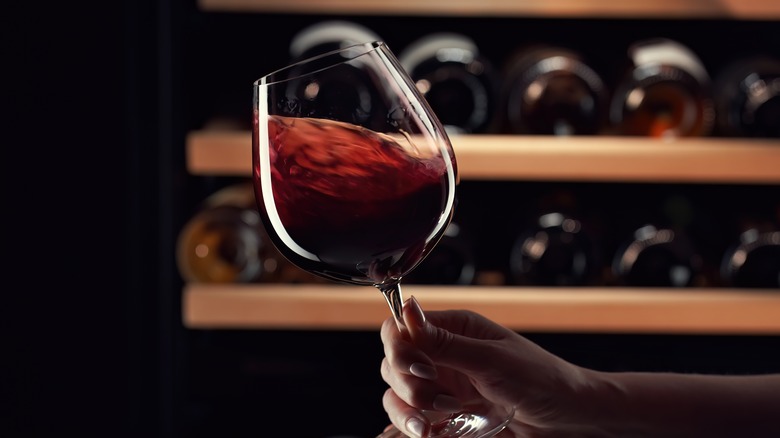Here's What Makes Some Wine More Alcoholic Than Others
Most of us pick which wine to buy based on the grape varietal since we know, for example, if we prefer a Riesling over a pinotage. But alcohol content in wine can be just as important, especially if we plan on pairing the wine with food. A typical table wine will sit around 12% to 14% ABV, though there are exceptions like fortified wines which go much higher. The winery producing the bottle will have decided beforehand what level of alcohol they want it to be. The alcohol content plays an important role in a wine's flavor profile so choosing the ABV is an important decision not likely to be left to chance. Higher alcohol wines tend to have big bodies and bold flavors, characteristics you're more likely to find in a red wine. While low alcohol wines tend to be light bodied, something we often associate with a refreshing white wine.
How the winery achieves their desired ABV is a matter of technique. The two main variables a winemaker can use to adjust alcohol content are sugar and yeast. That's because sugar is the ingredient that yeast converts into alcohol. Yeast comes in different strains and a winemaker will select the right strain for the job based on its characteristics. Wine yeasts in general have a voracious appetite for sugar and can withstand high concentrations of alcohol before they die off. The fact that yeast doesn't survive beyond a certain concentration of alcohol constitutes the upper limit of what ABV is attainable through natural fermentation.
Sugar and yeast determine alcohol content
So the winemaker chooses the right strain for the job. If they want a higher alcohol content, they will likely choose a more resilient yeast capable of surviving long enough to reach the goal. But the yeast can only create alcohol so long as there's enough sugar available to it. This is where grape varietal comes into play.
Wine grapes are bred to have a higher sugar content than what you might buy at the store to eat. That isn't because all winemakers like sweet wines. It's because the more sugar is contained in the grape, the more alcohol can be produced. There are other methods to increase alcohol content such as chaptalization, which is a fancy word for adding more sugar (but that's a last resort).
The higher sugar content in grapes is what accounts for the higher alcohol levels in a bottle of wine versus a can of beer. You can find beers with higher ABVs than 14%, but they are rare. The methods used push the limits of what qualifies as a beer. Earlier we mentioned fortified wines, which are likewise more alcoholic than table wine. Fortified wines like sherry and port are similarly produced using different methods than regular wine. They are distilled, which means the wine is concentrated to achieve an artificially high alcohol content. Distillation is the final tool a winemaker can use to increase alcohol content, but wine ceases to be wine after distillation, despite fortified wine's similar nomenclature.

